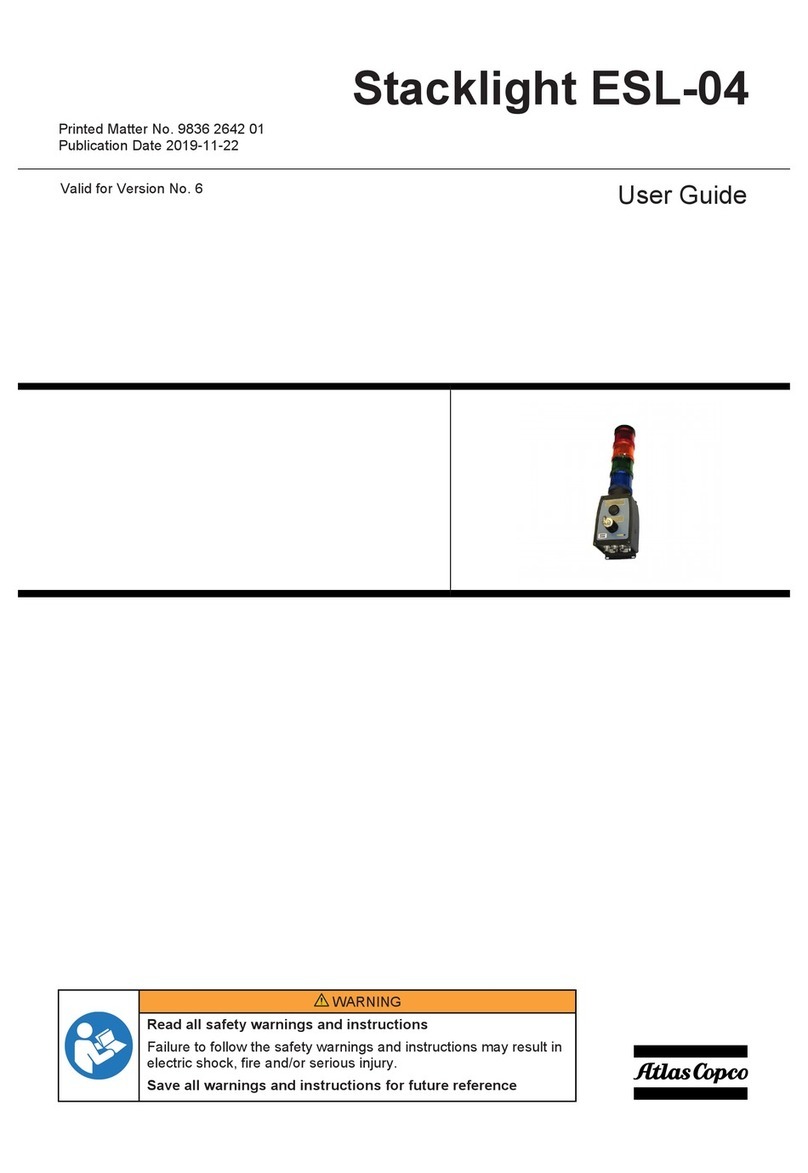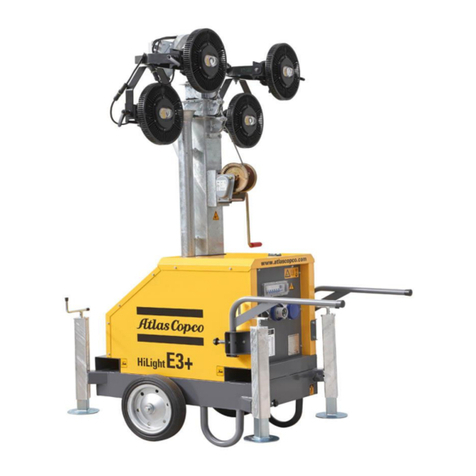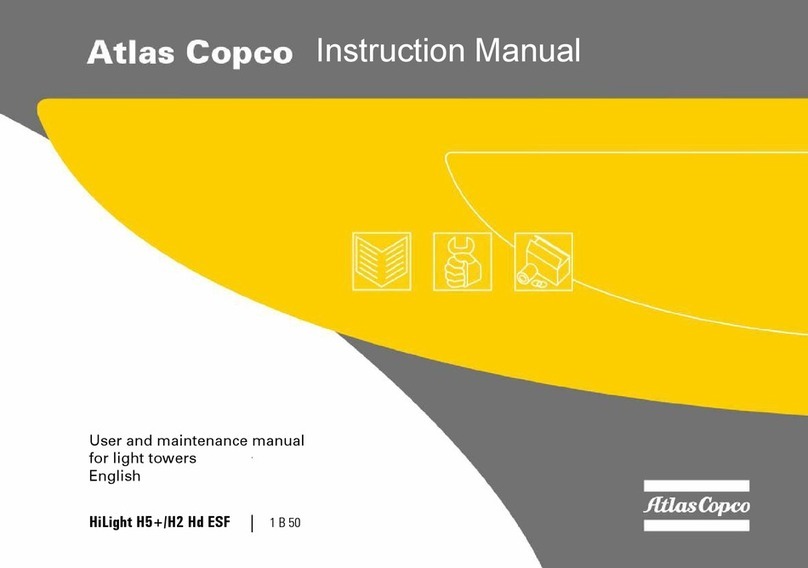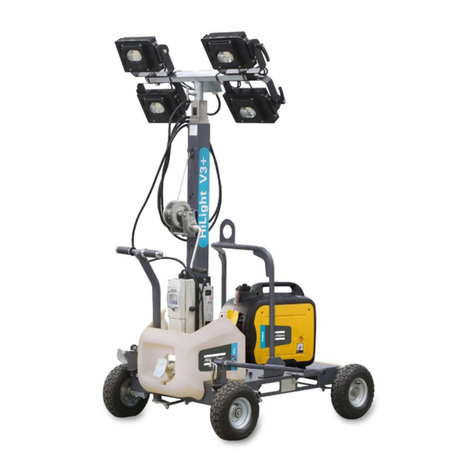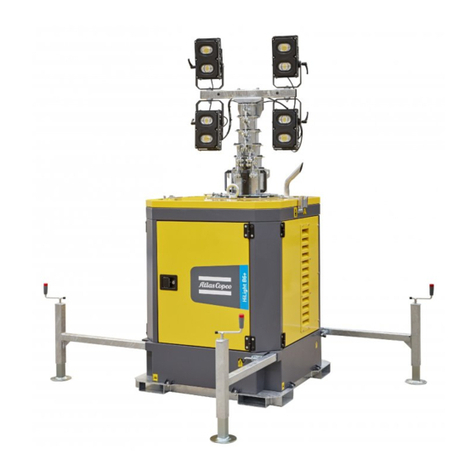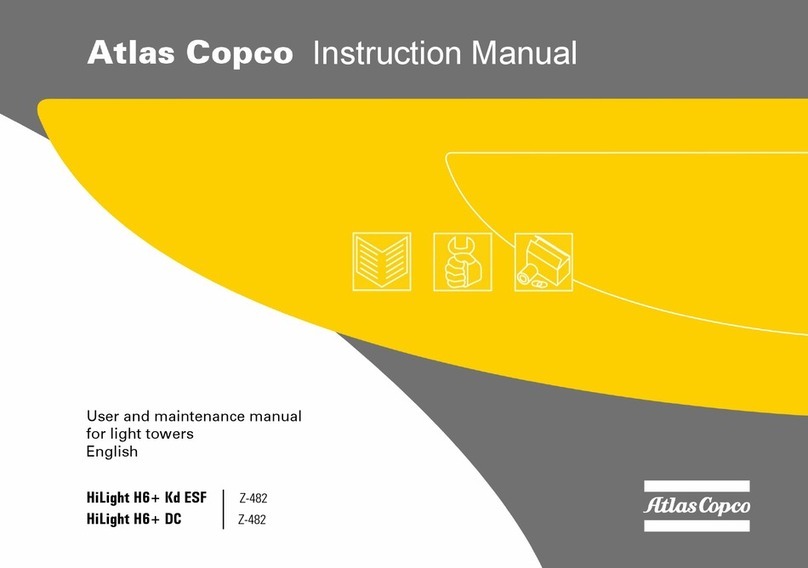
- 6 -
Safety precautions
Electric shocks
– To avoid the risk of electric shocks never touch
the machine with wet hands or feet.
– Make sure that the generating set is connected to
earth (see “Earthing” on page 15).
– Check the efficiency of the safety device every
month by means of the test button of the
differential current device (when fitted).
Noise
– Depending on the level and exposure time, noise
is dangerous to the hearing.
– Never operate the machine without a muffler or
insulating panels.
– When using this machine, always comply with the
applicable local noise regulations .
– Always place the machine in an isolated location.
Fuel
– Always switch off the engine and leave it cool
down for at least 2 minutes before refuelling.
– Do not smoke during refuelling and keep at a safe
distance from flames or sparks.
– Be careful not to spill fuel onto the engine or the
muffler when refuelling.
– Do not operate the machine if you notice fuel
spills or in case of any other explosion risks.
– Contact a doctor immediately should fuel be
swallowed or if fuel has come into contact with
the eyes.
– If fuel accidentally comes into contact with the
skin or clothes, immediately wash the skin
carefully with soap and change your clothes.
Hot surfaces
– Place the machine in a fenced-off location so to
avoid possible harm to passers-by or animals.
– Do not allow children to operate the machine.
– Do not allow inflammable liquids and/or materials
(e.g. fuel, oil, paper, styrofoam, wooden chips etc)
to be placed close to the exhaust pipe while the
machine is running.
– Do not generate sparks when the glow plug is not
installed.
– The engine and exhaust will be hot after use,
therefore avoid any direct contact when checking
or repairing them. Always wait until they have
cooled down.
– Never operate the machine when the canopy or
panels are open or have been removed.
– Make sure that the machine is placed at least
1 metre away from walls or any machinery in
order to avoid possible overheating of the engine.
– Do not cover the machine during operation.
– Do not tamper with the engine's springs, levers or
any other parts in an attempt to change the
engine's speed.
– Do not start up the engine if the air filter or air
filter lid are not in place.
– Do not move the machine during operation and
always place it on solid ground or on a suitable
stable base made of non-inflammable material.
Exhaust gases
– Do not operate the engine indoors, inside closed
or little ventilated spaces (such as tunnels, tanks,
pits etc) unless these locations were established
specifically for the use of this machine.
– Exhaust gases can cause loss of consciousness and
death in humans within just a few minutes.
– A suitable exhaust discharge system (for instance
leak-proof pipes) must be provided if the machine
is operated inside closed rooms.
– The machine must be placed at least 1 metre away
from any wall or from the ceiling. Suitable
openings for ventilation must be provided to
ensure adequate cooling and efficient engine
combustion.
